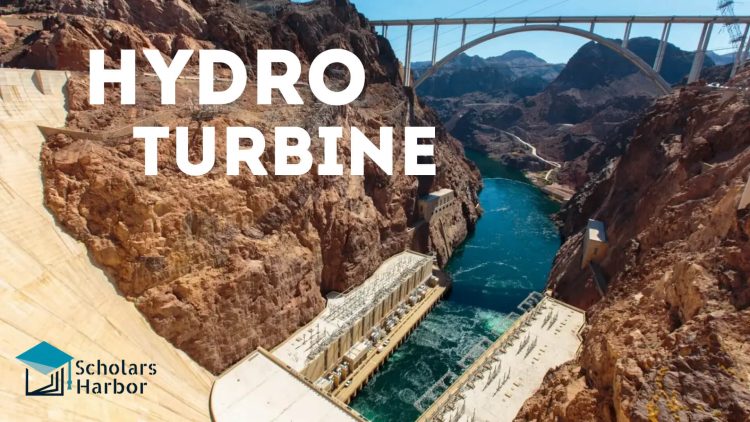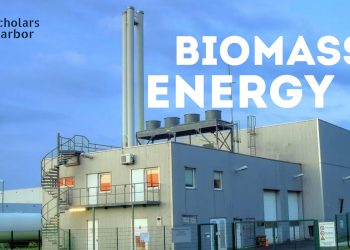Hydro power generates electricity by converting the potential-energy included in falling water. The fundamental concept behind hydropower is that if water can be directed from a higher level to a lower level, the potential energy that results can be used to generate power. The movement of a mechanical part caused by a water head requires the conversion of water’s potential energy into mechanical energy. Water pressure is changed by hydro-turbines into generator power or other useful work.
Hydro power is a particularly pure form of energy because it simply utilizes water, which can then be used for other things after producing electricity. With 6% of the world’s energy supply coming from renewable sources, hydropower is currently the greatest source of electricity in the world. It has historically been a cheap and reliable source of energy.
It has long been recognized that falling water can be used as a source of energy. Water wheels were employed in history, but the hydro turbine wasn’t created until the first half of the nineteenth century. The majority of these power plants used sizable dams to flood vast tracts of land in order to store water and maintain a steady flow of electricity.
Hydro Turbine
A water turbine is a rotating device that uses the kinetic and potential energy of water to produce mechanical work. The quantity of electrical energy that may be produced from a water source essentially depends on two key factors. The distance that the water must fall on turbine and flow rate of water. Water turbines are consequently developed to suit these various sites because the water source differs depending on the geographic location of the unit.
The principle of energy conservation, the amount of water that can be used for continual power generation, specific speed of the turbine, and available water head on the machine all play a role in the design and selection of water turbines.
Types of Hydro-Turbine
There are 2 types of water turbine
- Impulse Turbines
- Reaction Turbines
1. Impulse Turbines
Impulse turbines perform best at high head, low flow sites between 6 & 600 ft. Water exits the turbine’s bottom at air pressure and is propelled through the impulse turbine by its velocity. The generator is powered by the kinetic energy produced when the flow forms a jet that strikes the turbine in an open area. Such turbines are frequently simple and inexpensive in their design. Impulse turbines are available in three distinct types.
- Turgo-Turbine
- Pelton-Turbine
- Cross Flow-Turbine
Turgo Turbine
The Turgo can operate effectively at lower head ranges because it can generate tremendous power by utilizing more water with little head. As a result, it handles significantly larger water flow rates. The water jet makes a sharp angle as it enters & leaves the runner.
Pelton Turbine
When jets of water from nozzles impact the double cupped buckets connected to the wheel and positioned around the perimeter wheel, a force is generated which turns the wheel with high efficiency rates of 70% to 90 %. At least one free jet is present on a Pelton wheel. Pelton turbines are appropriate for high head, low flow rate applications. Recently, modest hydropower plants can also use Pelton turbines.
Cross Flow Turbine
A long, rectangular nozzle that is pointed at a cylindrical runner is used by the cross-flow turbine, which has a drum-like shape. The cross-flow design of the turbine allows water to pass twice between its blades. Two passages of water are made through the blades: the first from the outside to the inside and the second from the inside to the outside.
2. Reaction Turbines
In low head & high flow situations, reaction turbines work better. They do not have nozzles; rather, blades that extend outside of the runner’s edge are positioned and shaped so that the spaces between them resemble nozzles in cross – sections. A reaction turbine uses pressure and moving water to generate energy.
When running at low speeds, reaction turbines are more effective than impulse turbines. Also Reaction turbines are often preferred to impulse turbines when the head is lower but the flow is larger. Reaction turbine can be divided into
- Propeller Turbine
- Francis Turbine
Propeller Turbine
Most reaction turbines are of the propeller type, which is useful and indicates high efficiency, simplicity, and cost-effectiveness. Typically, a propeller turbine has a runner with 3 to 6 blades where water streams are continually struck at a steady velocity. The blades’ pitch would either be fixed or changeable.
Francis Turbine
The Francis turbine, which has a radial or mixed flow runner (radial/axial) and is frequently installed in a helical casing with internally changeable guiding vanes, is the most widely used hydroelectric turbine. Just over the runner, water is supplied all around it and then falls through, spinning the object.
Conclusion
Hydro turbines are a reliable and efficient form of renewable energy that harness the power of falling water to generate electricity. They have low environmental impact, can provide consistent power, but their availability and cost of construction and maintenance are challenges. Hydro turbines are an important and viable option for meeting the world’s growing energy needs. Despite these challenges, it remain an essential and viable option for meeting the world’s growing energy needs and reducing dependence on fossil fuels.
Cite this Article
| Author: | Scholars Harbor |
| Year: | 2022 |
| Title |
Hydro Turbine and its Types – Explained |
| Publisher: | Scholars Harbor |
| URL: | https://scholarsharbor.com/hydro-turbine-and-its-types-explained/ |











Discussion about this post